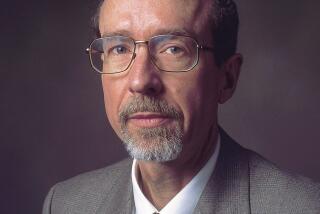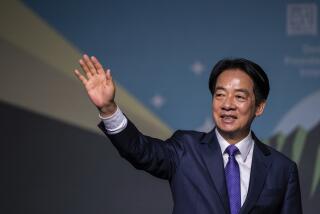The Shattered Dream: CHINA /1989
- Share via
BEIJING — For a brief moment, it was one man against an army. One individual who stood alone against a column of tanks. One citizen who, to many, stood for an entire nation of 1.1 billion Chinese.
The man jumped on top of the lead tank and talked briefly to the soldiers before friends hauled him away to safety.
Many were not so lucky. The People’s Liberation Army turned its guns on them in a simultaneous display of the brute physical strength and the unmistakable political weakness of China’s rulers.
For centuries before Christ, a succession of emperors had ruled China with the power of the sword. Deng Xiaoping had appeared willing to try a new way. For the better part of a decade, the 84-year-old Deng, China’s supreme leader, had permitted a measure of economic freedom.
For many Chinese students, that was not enough. They massed in Tian An Men Square in central Beijing, chanting slogans for democracy, demanding a free press, erecting an imitation Statue of Liberty.
This was more than Deng and the octogenarian leaders of the Communist Party were willing to permit.
During the night of Saturday, June 3, troops moved toward the center of Beijing. In the ensuing clashes, hundreds of people were killed, perhaps thousands. At 7:40 a.m. on Sunday, a government loudspeaker announced to an empty, bloodstained square: “Rebellion has been suppressed, and the soldiers are now in charge of Tian An Men.”
But the shock waves from the Chinese demonstrations will reverberate for years both inside China and throughout the world.
For many in China, the spring of 1989 shattered whatever faith they retained in the ruling Communist Party and its leaders.
And around the globe, millions became moral supporters of the demonstrators, glorying in their triumphs and grieving in their ultimate suppression.
What follows is an account of what, for now, remains a shattered dream.
More to Read
Sign up for Essential California
The most important California stories and recommendations in your inbox every morning.
You may occasionally receive promotional content from the Los Angeles Times.













